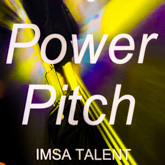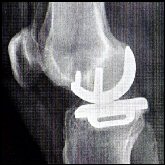 Insights from the Cornerstone Angel Meeting
Insights from the Cornerstone Angel Meeting
by Stephanie Wiegel
Angel investment deals aren’t made on the spot as the TV show Shark Tank suggests. Instead, entrepreneurs are excused from the meeting after delivering their pitches. If you’re vying for early investment money, what’s said behind these closed doors can make or break a deal.

Last month, I had the privilege of sitting in on a Cornerstone Angel meeting—and I got to stay after the doors were shut. Staying behind after the entrepreneurs left the meeting gave me valuable insight into what angel investors really want to hear in a pitch.
The Cornerstone meetings are held in a swanky downtown Chicago office. Before entering the meeting, I passed by a Liechtenstein original that hung above the registry table outside the conference room. About twenty people filled the horse-shoe shaped table facing the pitch floor. There’s no Persian throw rug on the floor like Shark Tank, just a projection screen for the pitch deck. [Nothing about this meeting resembled an episode of Shark Tank; Rug and off-the-cuff deal making included].
The start-ups ranged in scope from apps to coffee roasting machinery to customized meal delivery. The entrepreneurs were just as diverse as their ideas with fresh college graduates presenting alongside former CEOs with decades of experience. One team even had a retired MMA fighter as co-founder.
While the ideas and teams were diverse, common-thread-concerns surfaced from investors that applied to most start-ups. I learned that severe deficiencies in these areas can stymie angel funding and other investments. Here are some insights gleaned from investor concerns that apply to any pitch.

1. Don’t try to include every detail in your pitch.
Including too many details can convolute your business model and leave investors sifting through details to find your core. Investors are looking for a pitch with key information, but they’re also looking for a coherent story. The angels and their team perform due-diligence research before investing, so they’re used to gathering some information themselves. It’s important to tell a clear and compelling story in your 10-minute pitch. Let investors gather the details after you have them hooked.

2. Show that essential partners are on board.
It’s rare that a start-up can disrupt established markets on their own. This means most businesses need key partnerships to get the ball rolling. If your idea hinges on support from another institution, it’s important to show that they’re on board to help. Showing that you have identified essential partners is important to investors, but they also want to see these partnerships actively being built.

3. Be clear about your IP strategy.
Investors want to know how you plan to protect your novel solution. Having a first mover advantage often isn’t enough to protect your business. A clear IP strategy assures investors that you have a defense plan in place. Aside from defense, patents can be critical assets for an exit. If your plan is acquisition, the last thing you want investors asking is “How will you get acquired?”

4. Angels bet on the jockey more than the horse.
With 90% of stat-ups failing, investors know they aren’t always betting on a winner. Some venture groups are starting to use big data and statistical models to identify winners. Until these models are proven, most investors still go with their gut. Angels at the Cornerstone meeting said a strong team is the #1 most important metric to gauge success by. They said that ideas [the horse] pivot and change, but only a strong team [the jockey] will see it through to success. While important team dynamics are hard to pin down, investors seem to be looking for experience and a good dynamic between co-founders.
These tips can be used to craft a compelling pitch, but they’re only a starting point. To really hook investors, you’ll need more information. A successful start-up asks their end-user what they want, then engineers accordingly. Investors are like the end-users of your pitch. As an engineer, this is my biggest take-away from the Cornerstone Angel meeting. You can engineer a pitch that will delight investors—but to do that, you need to ask them what they want. So, here’s my last insight from the meeting:

5. Interview investors before the pitch.
I didn’t get all the answers from attending one meeting. The best way to expand this list is by asking investors directly.
■
.

Stephanie Wiegel is a graduate student from the McCormick School of Engineering. Her graduate focus lies at the intersection of bionanotechnology and entrepreneurship.
Chicago Venture Magazine is a publication of Nathaniel Press www.ChicagoVentureMagazine.com Comments and re-posts in full or in part are welcomed and encouraged if accompanied by attribution and a web link. This is not investment advice. We do not guarantee accuracy. It’s not our fault if you lose money.
.Copyright © 2017 John Jonelis – All Rights Reserved
.
.






































































































































































